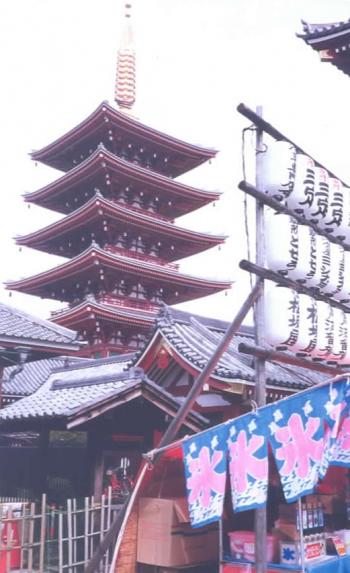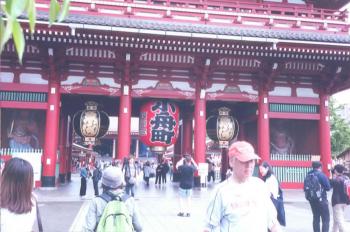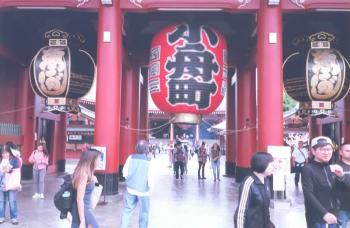Tokyo on a budget
This item appears on page 14 of the April 2019 issue.
When you "spring" for Tokyo, the metropolis is full of not only sakura (cherry blossoms) but hordes of people, millions of them. If you can stand the crowds, spring and autumn are the best times to visit.
I may have just missed the cherry blossoms, but by taking my trip to Tokyo from May 1 to May 9, 2018, I was assured a seat on United Airlines and a room at my hotel, as heavy tourist traffic had let up when the last petal fell. The azaleas were in full bloom, however.
Sometimes when you visit a travel agent, you're quoted hotels in the $300-to-$600 range, but I lucked out when I went into the California State Auto Association's (AAA's) travel department. I told the reservationist I would go to Tokyo if they came up with a nice room for under $100. "How about $85?" she replied. "Sold!" I said. She got me a package rate combining air and hotel.
For those of you who may follow in my footsteps, here's what I suggest doing.
When you land at the Narita International Airport (or before you leave the US), I advise that you get some Japanese currency. Look for a money-exchange window. (And don't minimize the value of Japanese coins; some are worth $5!)
The airport is quite some distance from downtown Tokyo, and you can take a bus, cab or train into town. My choice was the train.
After clearing Customs, proceed to the train station, which is under the airport. Luckily, the Metro signs are in both Japanese and English, or you can ask directions at the "Info" desk; there is always an attendant present who can guide you. You'll want the Keisei Narita Airport Line.
Deposit some yen in the ticket machine, get your ticket and insert it at the gate. (Hold on to this ticket.) Board the Keisei Line train. It's underground but, once rolling, immediately climbs aboveground, where you'll see rice paddies, houses and shrines flashing by. Soon you'll leave the countryside.
Inside the train cars, changeable signs above the doors display upcoming stations in both Japanese and English. Watch for "AOTO" and get off at Aoto Station. Make your way to the subway, take the Asakusa-line train and disembark at Kuramae Station.
•
A taxi can whisk you from the station to a low-cost hotel that I heartily recommend in this upscale, high-priced capital of Japan. (Actually, if it's not raining or if you're not lugging much luggage, you can walk there.)
The name of this 10-story, 160-room lodging is HOTEL MYSTAYS Asakusa (1 21 11 Honjo, Sumida-ku, Tokyo 130 0004, Japan; phone +81 3 3626 2443, www.mystays.com/en-us/hotel-mystays-asakusa-tokyo). HOTEL MYSTAYS is a chain with locations throughout Japan.
When I checked in at the desk on the second floor, I was informed that during a guest's stay, housekeeping is done only once a week. (Note: In Japan, tips are NOT expected by hotel maids, restaurant waiters or taxi drivers.)
I was a single traveler, so I had opted for a small (cruise-ship-sized) room. It had a "semi-double" bed — Western style, not at floor level.
The toilet was also Western, but entering the WC presented a problem, as you had to step up about a foot, then up 2 more feet and then, to try to enter the bathtub/shower, 2 feet down — very hard for a senior to do! BUT the wash basin outside the john was just the right height.
My room was air-conditioned and carpeted and had complete kitchen facilities, including a microwave oven, coffee pot (with coffee and tea), refrigerator, TV, desk, chairs, phone and Wi-Fi. An openable window looked out at the Sky Tree, a very tall observation tower.
My room was on the fifth floor. To get a better overview of the cityscape without having to visit the Sky Tree, I took the elevator to the 10th floor's balcony area. What I saw were skyscrapers in all directions.
Near the hotel, there are several convenience stores plus the ubiquitous McDonald's and Starbucks.
I was glad to find a 7-11, with its plentiful supply of delicious sandwiches and microwavable meals. Their hard-boiled eggs tasted like they had been thoughtfully boiled in saltwater. Among the desserts, such as custard pudding, was a new one for me: black cubes of coffee-flavored Jell-O laced with whipped cream. Yum!
I'm not a connoisseur of Asian food, so 7-11 hit the spot! And there were drink machines on almost every corner.
•
I had picked a hotel near Tokyo's Asakusa neighborhood because that was the location of a temple complex I wanted to visit: Sensō-ji. Sensō-ji has Buddhist temples, Shinto shrines, pagodas and huge incense burners. It's well worth the trip to Japan (12 hours in the air from Los Angeles).
Along the arcade leading up to the complex, you can "shop till you drop," see and smell food being cooked or buy a souvenir — maybe a painted fan or even a stack of postcards displaying the red paper lantern that graces the torii (gate) at the temple's entrance.
Unlike the rickshaws still roaming the old Asakusa district, cabs in Tokyo are new and shiny and expensive to ride. If you take the train, however, be prepared for crowds, especially during weekday commute periods. All of the stations I encountered were full of stores and stairs and many, many people!
There are dozens of other sights to see in Tokyo. It's worth a week's stay. Make sure that on one day you head to the Ginza shopping area, where you'll be amazed by the large, high-end department stores. (Think Gucci.)
Many of Tokyo's museums contain world-class art from Europe and elsewhere. The Edo-Tokyo Museum, located near HOTEL MYSTAYS Asakusa, contains all you need to know about Tokyo in "ye olden" days. Buy some wood-block prints by Hiroshige or Hokusai and frame them when you get back home.
Also, for kicks, you might want to buy a name stamp in Japanese at the museum shop as I did. The 7-11 sold just the right-sized ink pad for it. Paper fans are lightweight, colorful and highly giftable.
To convert local prices to dollars, just put a decimal point in front of the last two digits of the yen amount, like this: ¥10,000 = $100. More precisely, that would be $89.50, but don't sweat the small stuff with your calculator; you're on vacation, right?
•
At the end of your stay, when you're back on board those two trains for the airport, be sure to get off at the Narita Terminal No. 1 stop (not No. 2).
I found people in Japan to be really, really helpful, despite the language barrier, which you might slightly overcome by buying Barron's "Japanese at a Glance" pocket dictionary and phrase book.
As for a guidebook, I particularly liked "Fodor's Tokyo's 25 Best."
I hope I've given you a yen to visit this tumultuous, high-energy and frenetic but beautiful city, the price being so right.
For comfortable travel there, pack half the clothes and twice the money you think you'll require. Then you can relax.
BILL O'CONNELL
Mission Viejo, CA
**Please note the correction for this item.



